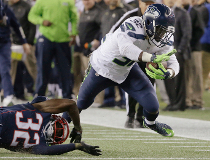Reader's comments »
By adding a comment on the site, you accept our terms and conditions.
Platt


A sneaky police tactic, with a singular goal of writing more traffic tickets.
It’s a rare day when the average Albertan would applaud such a strategy, never mind want more of the same: more police, relying on stealth to issue fines on provincial highways.
This might be that exception.
Earlier this year, Alberta’s Integrated Traffic Unit — the one manned by both sheriffs and RCMP — announced the return of aircraft patrols over major highways, meaning cops on the ground are no longer the only worry for those driving the busiest routes.
It sounded like a dastardly move, to circumvent sharp eyes and radar detectors with a helicopter and stopwatch, using the clock to measure the time it takes a vehicle to travel between painted lines on the highway.
And if the sheriffs and Mounties in the sky were only after typical speeders, dastardly it would be.
But that’s only part of the plan — and it turns out the helicopter is actually proving most effective at nailing those jerks no motorists appreciates, the ones who make life stressful and dangerous for everyone on the road.
“One of the great opportunities with a helicopter which we don’t get with a patrol vehicle on the ground is we can watch people for a longer length of time,” said Sheriff Jason Graw of the Airdrie Integrated Traffic Unit.
“When someone sees they’re being followed by a patrol car, obviously they change their driving habits. So this way, we can see people following too closely — tailgating to try and get someone to move out of the way.”
Last Friday, it was Airdrie’s turn to use the K-Division helicopter for some bird’s-eye reconnaissance of the traffic on the QEII, just north of town.
The result, over fours hours of policing aboard the Eurocopter AS350, was a total of 35 tickets written out for 28 vehicles, including speeding and following too closely.
At those rates, the chopper is hardly a cash cow for the cops, but the tickets it writes are far more valuable than the traditional speeding fine when it comes to highway safety.
These are tickets for the tools who really deserve them.
Get nabbed for speeding on the ground, and it may be that the officers laser hit you just as you were passing — the ticket you get for doing 125 km/h belying that you typically travel close to the speed limit, or with the flow of traffic.
Chopper cops do it differently.
As Graw says, they only take note of vehicles that stand out, and the high view “gives our officers the ability to spot vehicles that are travelling conspicuously faster than the flow of traffic.”
As well, speed is measured as an average, as the vehicle crosses over lines painted on the highway, meaning a short burst of acceleration won’t register — but buddy soaring down the highway at a steady 145 km/h sure will.
Tailgaters are obvious from above, as are vehicles weaving in and out of traffic like the drive to Calgary is a high-speed slalom.
Add in drivers too distracted (or impaired) to keep their ride between the lines, and the chopper does what cops hiding in the ditch can’t: it helps police the entire traffic pack, rather than just pinpointing the fastest driver at a given time.
“Observing from the air really gives you a chance to see the big picture, and really pick out vehicles travelling faster for a long period of time, as well as other dangerous manoeuvres,” said Graw.
The only shortcoming to policing by helicopter (or the silver lining, if you hate the idea) is the lack of aircraft to go around.
One RCMP chopper and thousands of kilometres of asphalt mean police have to wait their turn to fly, and motorists will seldom be watched from above, as the aircraft is used from Fort McMurray to Fort Macleod, and Banff to Brooks.
“It’s a good tool for us, to look for some of the other things that are more difficult to spot from a marked vehicle,” said Graw.
“We’re definitely hoping to do it more often.”
By adding a comment on the site, you accept our terms and conditions.











